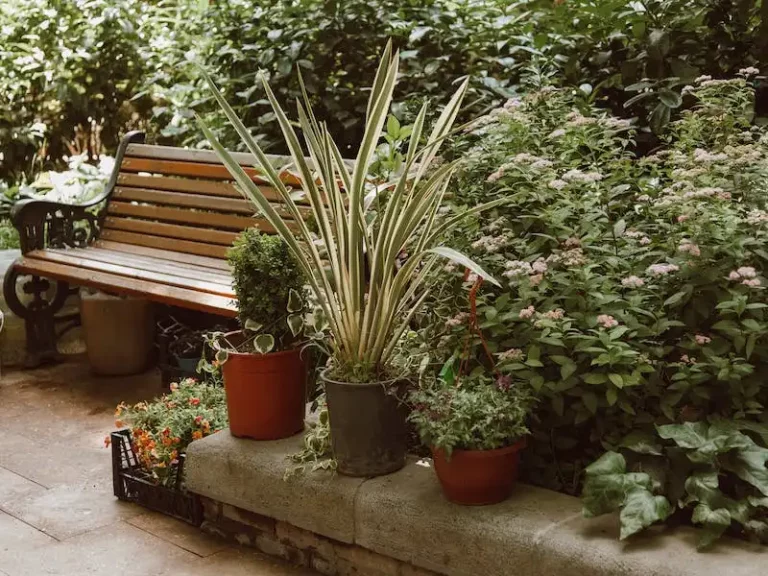Having a wasp infestation at your home or garden can be a type of nightmare that you never thought would happen to you. These pesky insects can quickly overrun your space and make it full of buzzing and stinging creatures. Not to mention the potential danger they pose, especially to young children who may be playing in the garden.
But fear not, getting rid of wasps doesn’t have to be a tricky and dangerous battle. In fact, with the right plan and a few simple solutions, you can say “goodbye” to those pesky insects in no time!
Step 1: Identify the source. Look carefully for the wasp nests, usually found in protected areas like under eaves, in trees, or within the ground. Once you’ve located the nests, you can move onto the next step.
Step 2: Take instant action. If you want to get rid of wasps without the use of pesticides, here’s a quick solution. Mix sugar and water to create a sweet spray. Spray this mixture onto the nest at night when wasps are less active. This will kill most of the wasps instantly.
Step 3: Remove the nest. Once the wasps are gone, carefully remove the nest. Use protective clothing, such as jackets, gloves, and a flashlight for better visibility. Make sure to freeze the nest to kill any remaining wasps or larvae.
Step 4: Keep them away. Prevention is essential when it comes to controlling wasps. Avoid leaving food sources, such as sugary drinks and fruit, uncovered. Additionally, using scents like peppermint or spearmint essential oils can deter wasps from your area.
Step 5: Set up traps. If the wasps keep coming back, consider using traps. There are many types of traps available in the market that can effectively catch and kill wasps without harming other beneficial insects like bees and spiders.
In conclusion, getting rid of wasps may seem like a daunting task, but with the right approach and the right tools, you can say “goodbye” to these pesky insects. Take instant action, remove the nests, and keep them away with prevention and traps. Remember to always proceed with caution and protect yourself during the removal process. Good luck!
How To Get Rid of Wasps
Wasps can be intimidating and dangerous creatures to have around your home or workplace. Their stings are painful, and they can cause allergic reactions in some individuals. Therefore, it’s important to take action to remove them safely and effectively. Here are five steps to get rid of wasps:
1. Locate the Attract Sites: Look for areas where wasps are frequently seen, such as garbage cans, picnic areas, or flowering plants. Remove any food or water sources that may be attracting them.
2. Identify and Remove Wasp Nests: Wasps build their nests in various locations, including in the ground, on tree branches, and under eaves. Carefully spray the nest with a combination of water and insecticide, wearing protective clothing to avoid getting stung.
3. Control Nests on the Ground: If the nest is on the ground, use a wasp trap or a combination of water and insecticide to eliminate it. Be sure to keep children and pets away from the area while attempting controlled removal.
4. Banish Them from Building Areas: Wasps often build nests in or around buildings. To remove them from these areas, spray a combination of water and insecticide along the eaves, windows, and walls where they are located.
5. Takeaway: The final step in wasp removal is to be alert and watch for any signs of wasp activity. If you see wasps returning to the area or notice a new nest, gear up and locate the nest for removal again. It’s important to be persistent in your attempts to control and remove these invaders.
Remember, wasp extermination can be dangerous, especially for individuals with allergies. Always consider hiring a professional if you are unsure or if the nest is larger and harder to reach. Be cautious and follow safety guidelines when using aerosols or insecticides to avoid harming yourself or the environment.
In conclusion, getting rid of wasps requires identifying their attract sites, removing their nests, and taking preventative measures to keep them away. By following these steps, you can ensure a wasp-free environment and enjoy your spring and summer without the fear of wasp stings and their bothersome presence.
DIY Solutions To Get Rid of Wasps
When spring arrives, one of the unwanted visitors at your home or garden can be wasps. These winged creatures can be quite a nuisance, especially if their numbers start to increase. However, there are several DIY solutions you can do to control and remove them effectively.
|
While DIY solutions can be effective, it’s important to note that dealing with wasps can be dangerous, especially if you have allergies or encounter a large wasp nest. In such cases, it’s best to call professional extermination services to handle the situation.
So, if you find yourself dealing with wasps around your home or garden, follow these DIY solutions to get rid of them effectively and safely.
Identify the Problem
Before you can effectively deal with a wasp problem, you need to first identify it. Wasps are often mistaken for bees, so it’s important to know the difference. Wasps have a smoother body and a more defined waist, while bees are generally hairier with more rounded bodies.
Once you’ve confirmed that you’re dealing with wasps, it’s important to determine the size of the infestation. Are you just seeing a few wasps here and there, or have they become a constant presence around your property?
Next, locate the nests. Wasps typically build their nests in sheltered areas, such as under eaves, in trees, or in bushes. They may also build nests underground or in wall voids. Use a flashlight to carefully examine these areas, as wasps are most active during daylight hours.
If you’re having trouble locating the nests, you can also look for wasp entry points. Wasps need a water source, so look for areas with standing water, such as bird baths or puddles. They also build their nests near a source of food, so check for areas where you’ve seen them hovering around, such as outdoor garbage cans or picnic areas.
Once you’ve identified the problem areas, it’s time to plan your approach. Depending on the size of the infestation and your comfort level, you can choose to handle the problem on your own or hire a professional exterminator.
| DIY | Professional |
| Pros: You have control over the process and can save money. | Pros: You don’t have to worry about getting stung or dealing with potentially dangerous chemicals. |
| Cons: It can be time-consuming and may require multiple knockdowns. | Cons: It can be more expensive than doing it yourself. |
| Recommended for: Small infestations or if you’re comfortable dealing with wasps. | Recommended for: Larger infestations or if you have a vespid allergy. |
Whichever option you choose, make sure to have the necessary gear. Wear protective clothing, such as long sleeves, long pants, gloves, and closed-toe shoes. If you’re allergic to wasp stings, consider carrying an epinephrine auto-injector.
Remember, it’s important to be cautious when dealing with wasps. They can become aggressive if they feel threatened, so always approach with care. And don’t forget to have a plan for removing the nests once the wasps are gone.
In the next step, we’ll discuss how to safely remove wasp nests and prevent future infestations.
Continue to Step 2: Removing Wasp Nests and Prevention.
Take Precautions
When dealing with wasps, it’s important to take precautions to protect yourself from stings. Here are some steps you can take:
- Wear protective gear such as long sleeves, pants, gloves, and a hat.
- Make sure any openings or areas where wasps may enter your home are sealed.
- Inspect your yard and gardens regularly for signs of wasps or their nests.
- When attempting to remove wasp nests, do so carefully and preferably at night when the wasps are less active.
- Use a wasp control program or insecticide spray that kills wasps instantly to get rid of them.
- If you’re having a barbecue or picnic, keep food and drinks sealed and covered to prevent wasp attraction.
- Avoid wearing bright colors or floral patterns, as they can attract wasps.
In addition to these precautions, there are a few other steps you can take to stay safe:
- Learn how to identify different types of wasps, as some are more aggressive than others.
- If you find a dead wasp, carefully inspect it for any markings or differences that could help with identification.
- Always be cautious when approaching nests or areas where wasps may be present.
- Gather and dispose of fallen fruits, as they can attract wasps.
- Knock down any inactive nests you find to discourage wasps from returning.
- When going outdoors, shake out and inspect your clothing, shoes, and socks to make sure no wasps are hiding.
- Before attempting to remove a nest or treat an infestation yourself, gather information and read FAQs about proper wasp control.
- Use dusts or other products specifically designed to banish wasps from structures.
- If you have indoor wasp problems, consider using a vacuum or insecticide spray to quickly kill or remove them.
- Seal any holes or openings in your building that wasps may use to enter.

